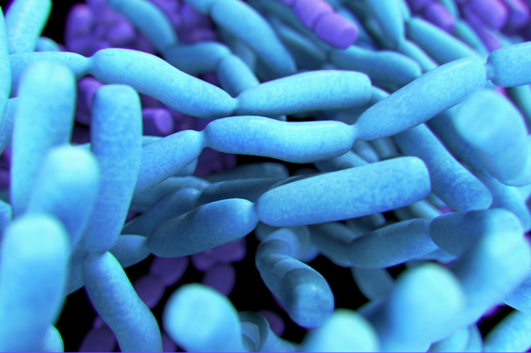Unlocking the Secrets of Lactobacilli in Vaginal Microbiota
Lactobacilli are beneficial bacteria that dominate the vagina’s microbiota under healthy conditions.
Lactobacilli are beneficial bacteria that dominate the vagina’s microbiota under healthy conditions. These bacteria play crucial role in maintaining a healthy vaginal environment and protecting against infections.
The administration of Lactobacillus as an adjuvant in strategies to prevent recurrence of infections is used to maintain the acidic vaginal ecosystem by producing lactic acid which creates a pH bellow 7 to help prevent the growth of microorganisms that can be harmful. The production of peroxide of oxygen, bactericides, and proteins of union to the surface by these Lactobacillus inhibits the adhesion to uroepithelial cells.
In this
blog, we will explore the antimicrobial properties of lactobacilli,
their ability to produce proteinaceous substances that inhibit pathogens, and
the pathological conditions that can arise from an imbalance in the vaginal
microbiota

Lactobacilli as Producer of Antimicrobial Proteinaceous Substances
Lactobacillus plantarum has been found to have broad antimicrobial activity against various pathogens, including Salmonella typhimurium, Escherichia coli, Listeria monocytogenes, and Staphylococcus aureus. The antimicrobial activity of L. plantarum is due to the production of organic acids and bacteriocin, which can reduce the population of pathogens in mixed culture inhibition assays.
The production of acid lactic facilitates the release of components of the innate immune system that inhibit the growth of other microorganisms, and Lactobacilli acts as a mechanical barrier by binding to the surface of vaginal epithelial cells, preventing the attachment of other bacteria that could affects these cells.
In addition to lactic acid, lactobacilli produce several proteinaceous substances with antimicrobial properties, including bacteriocins and antimicrobial peptides. These substances are essential for combating pathogenic microorganisms. Bacteriocins, for example, are lipoproteins that can pierce the cell membranes of competing bacteria, leading to their lysis and death. This mechanism not only helps maintain the dominance of lactobacilli in the vaginal microbiota, but also protects against colonization and proliferation of pathogens.
Pathologic Conditions Associated with Abnormal Vaginal Microbiota
A healthy balance of vaginal microbiota is vital for a woman’s reproductive and general health. However, various factors such as hormonal changes, antibiotic use, excessive hygiene, among others, can disrupt balance, decreasing the lactobacillus population and allowing the growth of unwanted microorganisms. This can lead to various pathological conditions:
- Bacterial Vaginosis (BV):
It is the most common vaginal infection in women of reproductive age. It is characterized by a decrease in lactobacilli and an increase in anaerobic bacteria.
Symptoms include vaginal discharge, odor, and discomfort.
- Vaginal Candidiasis:
Although not directly caused by a decrease in lactobacilli, the change in vaginal pH can favor the overgrowth of fungi such as Candida, causing infection and symptoms such as pain or discomfort during urination, pain during sexual intercourse and abnormal vaginal discharge.
- Sexually Transmitted Infections (STIs):
A decrease in the antimicrobial barrier of lactobacilli can make the vagina more susceptible to STIs such as chlamydia and gonorrhea.
Maintaining a Healthy Vaginal Microbiota
To maintain the health of the vaginal microbiota and the predominance of Lactobacilli, practices such as the following are recommended:
- Balanced diet:
Consuming foods rich in probiotics (such as yogurt, chucrut, kefir, tempeh…) can help strengthem the lactobacillus population:
- Adequate hygiene:
Avoid douching and excessive use of intimate hygiene products that may alter the vaginal pH.
- Regular visits:
Visiting the gynecologist regularly allows for monitoring and maintaining vaginal health, allowing for early interventions if the microbiota becomes unbalanced.
Conclusion
Lactobacilli are not only essential for maintaining a healthy vaginal pH, but they also produce antimicrobial substances that protect against infection. An imbalance in these essential microorganisms can lead to adverse health conditions. Therefore, it is crucial to adopt practices that support the health of the vaginal microbiota to protect against these conditions.
Don't hesitate to check out our website to learn more about other related topics.
#vaginalflora #lactobacilli #womanhealth #microbiota #bellavie
Source : Chee WJY et al - Microb Cell Fact. 2020; 19: 203. Vaginal microbiota and the potential of Lactobacillus derivatives in maintaining vaginal health
